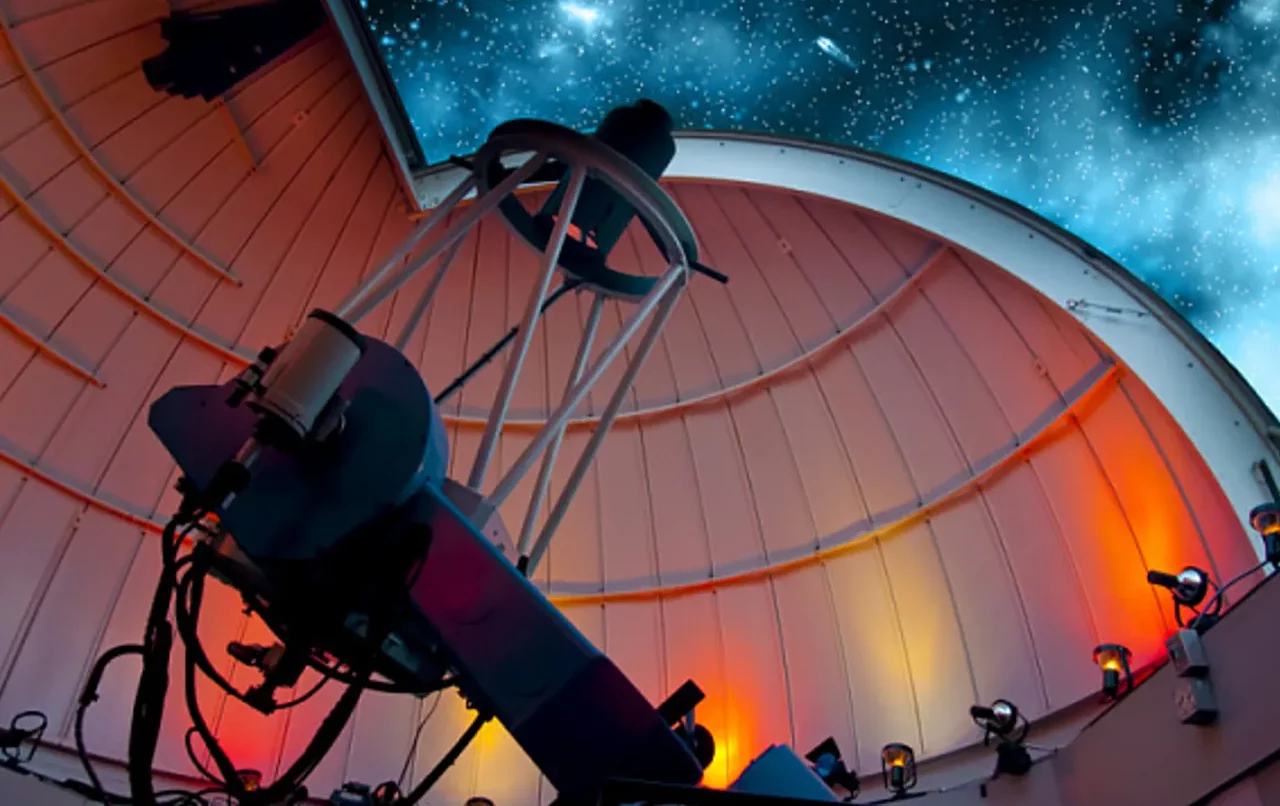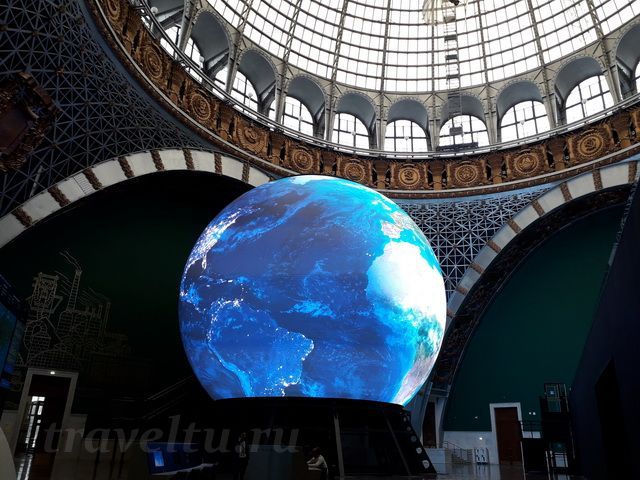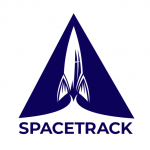You will see the main sights and memorable places associated with the past, modernity and future of astronautics. Visit museums, planetariums, observatories and other “space” objects. From St. Petersburg, where, by decree of Peter I, the first observatory of the Russian Academy of Sciences opened, and the first development association in the USSR to create rocket engines worked, you will go to the “cradle of cosmonautics” Kaluga, and then to Moscow.
You will visit where thoughts about conquering space were born, and where modern astronauts are trained for flights (and participants in the crew of the film “Challenge” trained). The design route includes three thematic blocks – “Space Petersburg,” “Space Capital,” “Cradle of Cosmonautics” You can choose where and when the journey begins and ends.
INCLUDED IN THE PRICE
Food
transport
Placement
Excursion program
program
Independent arrival in St. Petersburg
Check-in 3 – 4 *
07:30 – 08:45 – Breakfast at the hotel
08:45 – 09:00 – Meeting of the group with the guide
09:00 – 12:00 – Bus sightseeing tour
14:30 – 15:30 – Lunch
16:00 – 17:00 – Excursion to the St. Petersburg Planetarium
17:00 – 18:00 – Return to the hotel and free time
19:00 – 20:00 – Dinner at the hotel

Bus tour of the city
During a review tour of St. Petersburg, tourists will have an excellent opportunity to get acquainted with the historical city center in a short time, to see the most famous squares of the city: Isaakievskaya, Palace, drive along Nevsky and other central streets and avenues, admire unique architectural ensembles and monuments, as well as during the tour, the guide will tell about space places in St. Petersburg, where people of any age can learn about the history of outer space. Then there will be an excursion to the Peter and Paul Fortress – a unique monument of history, architecture and fortification art.

Museum of Cosmonautics named after V.P. Glushko
The museum exposition is dedicated to the history of Russian cosmonautics and rocket technology and the role played by St. Petersburg-Leningrad scientists, engineers, designers in the development of this area of domestic science and technology. The exposition presents unique developments of laboratory designers: rockets on smokeless powder, liquid rocket engines and their direct descendants – marching engines of space rockets. In the halls of the museum, models of the first artificial satellite and the Vostok spacecraft are shown. One of the museum’s most interesting exhibits is the Soyuz-16 spacecraft lander, which visited space and returned to Earth in December 1974. The exposition presents a layout of the International Space Station (on a scale of 1:50). Today, the ISS is a joint project in which the space agencies ROSCOSMOS, NASA (USA), JAXA (Japan), CSA (Canada), ESA (European countries) participate.

St. Petersburg Planetarium
The St. Petersburg Planetarium is one of the oldest in the country: the third after Moscow and Volgograd, opened in 1959, in a historical building built in 1898-1900. The Star Hall of the Planetarium is one of the largest in Russia. In this hall, everyone can touch the world filled with stars: you can see how the sky changes in a day, bright trajectories outline their movement of the Sun and planets, admire nebulae, the Milky Way, a solar eclipse and even make a desire for a “falling star.” It hosts scientific conferences, meetings with astronauts and scientists who share their knowledge and experience. Today, the St. Petersburg Planetarium conducts scientific and educational activities, clearly demonstrating to adults and children the fascinating world of astronomy, physics, cosmonautics and geography. Temporary exhibitions are periodically held on the planetarium site, thematic events are held – observation of celestial bodies.
07:30 – 09:15 – Breakfast at the hotel
09:15 – 09:30 – Meeting of the group with the guide
On the route, minibuses with a small capacity of 7 to 26 people are used, equipped with seat belts, a microphone and a separate place for the guide
10:00 – 12:00 – Visit to the Pulkovo Astronomical Observatory
12:00 – 12:30 – Transfer to Pulkovo Airport and departure to Kaluga
12:30 – 13:40 – Luggage delivery. Passing the inspection. Boarding a flight
14:10 – 15:40 – Flight St. Petersburg-Kaluga
Direct flight is carried out by Azimut airline, includes 5 kg of hand luggage, 1 place (up to 23 kg) of luggage, cold food: sandwich/juice/water. Transportation is carried out in accordance with the rules and regulations approved in the Russian Federation
16:30 – 18:00 – Transfer and check-in to hotel 3-4 *
18:00 – 19:00 – Dinner at the hotel. Free time

Pulkovo Astronomical Observatory
The Pulkovo Observatory has existed since 1839 and is located at the highest point of the Pulkovo heights (74.5 meters above sea level). The excursion program includes an acquaintance with the main current instruments of the Observatory – a 26-inch refractor telescope, the Bolshoi Pulkovo radio telescope, and the Solar Telescope. During the tour, you will learn a lot about astronomy, get acquainted with the current equipment of the observatory, see how the telescope works and the tower dome rotates. By looking into the telescope, you will feel like a real astronomer. In clear weather, with the help of special equipment you can see the Sun, bright planets and stars.
07:30 – 08:30 – Breakfast at the hotel
08:30 – Meeting of the group with the guide
On the route, minibuses with a small capacity of 7 to 26 people are used, equipped with seat belts, a microphone and a separate place for the guide
08:30 – 10:30 – Bus tour of Kaluga
10:30 – 12:00 – Excursion to the K.E. Tsiolkovsky State Museum of the History of Cosmonautics
12:00 – 13:00 – Kaluga planetarium
13:00 – 14:00 – Astronomical Observatory MMIK named after K.E. Tsiolkovsky
14:30 – 15:30 – Lunch in a cafe
15:30 – 16:00 – Free time for a photo shoot at the main exhibit of the outdoor exposition of the Kaluga Cosmonautics Museum – Vostok launch vehicle
Not just some copy: this is an understudy rocket for the flight of Gagarin. She stood in April 1961 at the launch pad of Baikonur and was preparing to fly in case of an emergency
16:30 – 17:30 – Return to the hotel. Free time
19:00 – 20:00 – Dinner at the hotel

Bus tour of Kaluga
Kaluga is a beautiful, ancient city spread on the hilly shores of the Oka. The abundance of architectural and historical monuments preserved in Kaluga from the 17th century, their uniqueness and significance in the history of the Russian state, make the city interesting and attractive for excursion tourism. That is why Kaluga is part of the routes along the “Small Golden Ring of Russia.” “Kaluga Space” – an overview tour of the city with an inspection of the monuments of K.E. Tsiolkovsky, S.P. Korolev, Yu.A. Gagarin and the 600th anniversary of Kaluga, Peace Square with the grave of K.E. Tsiolkovsky, Vostok launch vehicle, observation deck in front of the Cosmonautics Museum, Kamenki

K.E. Tsiolkovsky State Museum of the History of Cosmonautics
Museum of the History of Cosmonautics named after K.E. Tsiolkovsky – the first museum of the history of cosmonautics in the world, which presents exhibitions dedicated to the history of Russian cosmonautics from the first artificial satellite of the Earth to modern long-term orbital stations, the activities of outstanding chief designers

Kaluga planetarium
Kaluga planetarium. Russia’s first planetarium with combined optical-mechanical and digital projection, during the excursion full-dome programs will be demonstrated with an imaginative imitation of the presence in space

Astronomical Observatory GMIK named after K.E. Tsiolkovsky
Kaluga, st. Academician Korolev, 2 Astronomical Observatory GMIK named after K.E. Tsiolkovsky is designed for excursions and observations of the Sun, Moon, planets and other objects in the celestial sphere, including artificial Earth satellites.
Excursions to the observatory are carried out depending on weather conditions:
• in case of clear weather – with astronomical observations;
• in case of cloudy weather without precipitation – with demonstration of observatory capabilities;
• excursions to the observatory are not carried out in case of adverse weather conditions (strong wind, snow, rain, air temperature below -10C).
07: 00-08: 30 – Breakfast at the hotel
08:30 – 08:45 – Meeting of the group with the guide
On the route, minibuses with a small capacity of 7 to 26 people are used, equipped with seat belts, a microphone and a separate place for the guide
09:00 – 10:00 – Moving to Oreshkovo airfield
10:00 – 12:00 – Tour of the fleet with jets
12:00 -12: 30 – Free time
13:30 – 14:30 – Lunch in the cafe of the city. Transfer to railway station
15:33 – 17:31 – Train transfer to Moscow
Transportation is carried out by Russian Railways, departure from the railway station Kaluga-2, Kaluga, travel time 1 h. 58 min., Arrival at the Kiev station Moscow, Train 740A “Ivan Paristy,” seating car, equipped with air conditioning, biotualet. Transportation is carried out in accordance with the rules and regulations approved in the Russian Federation)
17:31 – 19:00 – Arrival in Moscow at the Kiev station. Transfer to hotel
On the route, minibuses with a small capacity of 7 to 26 people are used, equipped with seat belts, a microphone and a separate place for the guide
19:00 – 20:00 – Hotel accommodation 3 * – 4 *. Dinner and free time

Oreshkovo airfield
The history of the airfield began in 1940 and continues to this day. After the liberation of Kaluga in December 1941, the air regiment of the legendary Valentina Grisodubova was based here, and at the end of the war Oreshkovo became an air defense airfield under the command of I.N. Kozhedub until the division was disbanded in 1960. All equipment is active, including museum exhibits: Su-17M2, MiG-21, MiG-3. There are two Douglas from the Second World War, one of which delivered Landlic cargo to the USSR, the Mi-10 is being restored – a unique helicopter crane. You will be able to see the training flights of the pilots of the Reactors group, which are very spectacular with their different elements: “barrels,” “roller coaster,” “scissors,” group oblique loops, piloting to meet Extreme lovers will be invited to visit a center in which astronauts are trained and try some elements in practice
08:30 – 09:30 – Breakfast at the hotel
09:30 – Meeting of the group with the guide
10:00 – 11:30 – Walking tour of the territory of VDNH
11:30 – 12:30 – Excursion to the Center “Cosmonautics and Aviation”
12:45 – 12:51 – Visit the 5D cinema “Space Sphere” pavilion “Cosmos”
13:00 – 14:00 – Lunch in the cafe “Cosmos”
14:30 – 16:00 – Visit to the Cosmonautics Museum
16:30 – Return to the hotel and free time
19:00 – 20:00 – Dinner at the hotel

Walking tour of the territory of VDNH
Modern VDNH is the largest museum and recreation complex in the world, a grandiose “park of the Soviet period” in the north-east of Moscow. The uniqueness of VDNH is that it is both a giant park, an architectural ensemble and an exhibition space: the largest metropolitan festivals, concerts, a large number of exhibitions and master classes are held here, public art objects are exhibited. The tour route runs along the Central Alley. In 1.5 hours, visitors will learn the history of the Exhibition from the date of its foundation to the present day, interesting facts about the fountains “Friendship of Peoples” and “Stone Flower,” the history of the creation of pavilions of friendly republics, about modern zoning and the purpose of the Exhibition and much more

Center "Cosmonautics and Aviation"
Modern VDNH is the largest museum and recreation complex in the world, a grandiose “park of the Soviet period” in the north-east of Moscow. The uniqueness of VDNH is that it is both a giant park, an architectural ensemble and an exhibition space: the largest metropolitan festivals, concerts, a large number of exhibitions and master classes are held here, public art objects are exhibited. The tour route runs along the Central Alley. In 1.5 hours, visitors will learn the history of the Exhibition from the date of its foundation to the present day, interesting facts about the fountains “Friendship of Peoples” and “Stone Flower,” the history of the creation of pavilions of friendly republics, about modern zoning and the purpose of the Exhibition and much more

5D-cinema "Space Sphere"
The cinema “Space Sphere” is the only interactive exhibit of this format in the world, created specifically for the center “Cosmonautics and Aviation” at VDNH. From the outside, it looks like a 16-meter multimedia sphere showing the surfaces of the planets of the solar system. Inside it is a modern 5D-cinema, in which guests of VDNH will be able to make a virtual flight into space and go through the path of development and conquest of the Universe. The dynamic platform inside the cinema is capable of tilting, vibrating, rising and lowering in accordance with the storyline of the film. Each movement creates the effect of presence and turns the audience into heroes – conquerors of the endless Universe. Space Sphere Hall seats up to 30 spectators per session

Moscow Cosmonautics Museum
The Cosmonautics Museum is one of the largest scientific and technical museums in the world. The history of the museum began in the second half of the 20th century, when in 1964 the monument “Space Conquerors” appeared on the map of Moscow. The titanium rocket at VDNH has become a symbol of the high-quality technological leap of its time. The launch of the first artificial satellite of the Earth, the first living beings and the first person in space became the starting point in world cosmonautics. So space has become closer to humanity. In April 1981, the Memorial Museum of Cosmonautics was opened in the stylobate of the monument. Here were presented evidence of the first successes and achievements of Russian cosmonautics: the first spacesuits, the first artificial satellites of the Earth, spacecraft for the study of the Moon and the planets of the solar system
07:30 – 08:30 – Breakfast at the hotel
08:30 – 08:45 – Meeting of the group with the guide
On the route, minibuses with a small capacity of 7 to 26 people are used, equipped with seat belts, a microphone and a separate place for the guide
10:00 – 11.30 – Excursion to the Museum of the Rocket and Space Corporation (RKK)
12:00 – 13:30 – Excursion to the Flight Control Center (MCC)
14:00 – 15:00 – Lunch in a cafe
16:00 – 18:00 – Star City and excursion to the cosmonaut training center
19:00 – 20:00 – Return to Moscow and the end of the program

Rocket and Space Corporation (RCC)
“RСC Energia” has been operating in the rocket and space industry since 1946 – from the date of the formation of the long-range ballistic missile development team led by the Chief Designer of Rocket and Space Systems and the founder of practical cosmonautics S.P. Korolev. On August 9, 1946, by order of the Minister of Weapons D.F. Ustinov, S.P. Korolev was appointed Chief Designer of product No. 1 – a long-range ballistic missile. On August 26, 1946, by order of the Minister of Armament D.F. Ustinov, the structure of the NII-88 was determined, in which the formation of department 3 as part of the SKB was legally approved. August 26, 1946 was the founding day of our enterprise. The company became the founder of almost all areas of domestic rocket and space technology.

Mission control center
MCC is the largest research division of the Russian space industry. It is in its halls that all spacecraft in space are controlled: ISS, cargo (Progress) and transport (Soyuz) ships, spacecraft launched into space for research purposes, etc. In order to promote and demonstrate Russia’s technical achievements in the field of rocket and space technology for Russians and representatives of foreign countries. The tour participants will listen to an interesting story of the guide about the structure of the Flight Control Center, the work of the specialists involved here, they will see the halls from where the spacecraft located in outer space are controlled. From the shown videos, tourists will find out how life and work of astronauts in Earth orbit goes

Star Campus and Astronaut Training Center
Star Town is one of the most important points on the “space” map of Russia. It is here that our astronaut pilots are preparing for flights. On excursions to Star Town, excursionists will be introduced to the history of the appearance of Star Town, The history of the creation of the Cosmonaut Training Center named after Yu.A. Gagarin, as well as visit the unique facilities of its technical territory, where the actual preparation of astronauts for space missions is directly carried out, they will see a full-size analogue of the huge Mir orbital station, about which they will tell its story and familiarize themselves with the life and life of astronauts in Earth orbit. During a visit to the Soyuz spacecraft simulator hall, tourists will learn how astronauts are preparing to fly into space, what is included in the astronaut’s diet, how they return to the ground and much more
Order Tour
The first 20 travelers are guaranteed to receive Space Food gift sets

Supplementary services
- Souvenir products
- Photo and video shooting at the facilities
- Surcharge for 1-seat accommodation
- Transfer on the 1st and 7th day of the program
- Directions (to St. Petersburg and back from Moscow)
- Booklet “Big Space Journey” (250 rubles)
- Gift sets “Space Food” (950/1550/5500 rubles)
subscribe our news

Наша миссия:
- St. Petersburg, st. Malaya Morskaya, d.18. B/c Ponomarev, office 108
- (812) 777-0-999
- booking@starsoftravel.ru
©2021 SpaceTrack all rights reserved
- Legal
- Term Of Service
- Term Of Use